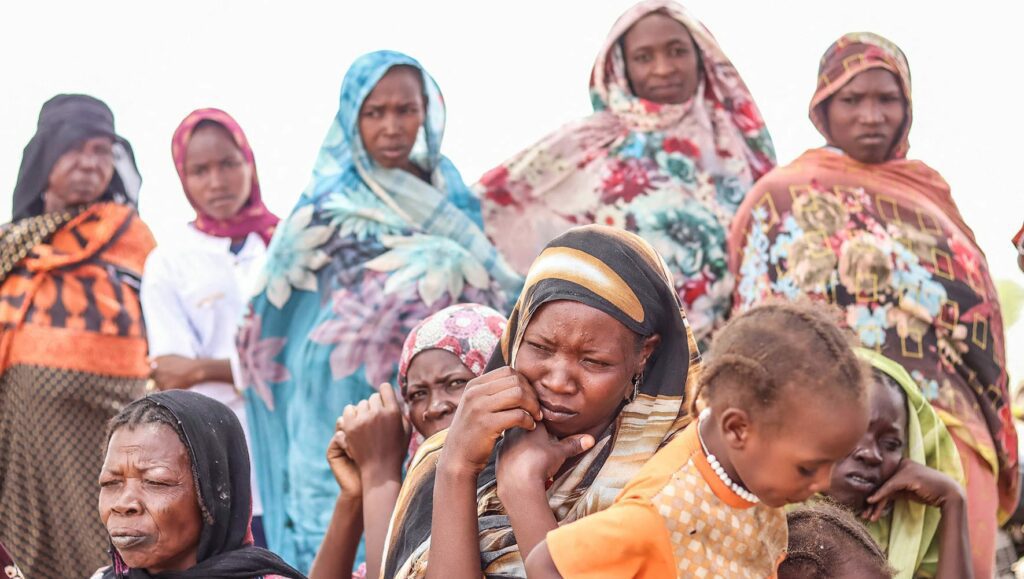Sudanese refugees from the Tandelti area who crossed into Chad, in Koufroun, near Echbara, gather on April 30, 2023 for an aid distribution. Photo by Gueipeur Denis SASSOU / AFP via Getty Images
In the past week, the world has turned its attention to Sudan, Africa’s third-largest country, where fighting between rival governing factions has reportedly killed hundreds and injured thousands. The conflict, though largely centered in the capital Khartoum, has spread throughout the country, causing many Sudanese to flee. On Thursday, the UNHCR estimated that 10-20,000 people fleeing the conflict have crossed Sudan’s western border into Chad, a country that is already home to some 400,000 Sudanese refugees.
A nation of 17 million in the center of Africa, Chad has long been beset by numerous problems. It is one of the world’s poorest countries: Only four percent of the population has access to electricity, and basic services such as clean drinking water, sanitation, and paved roads are scarce. Last year, the most severe flooding in decades left large sections of the capital, N’Djamena, underwater and displaced hundreds of thousands of people. This disaster has only exacerbated an acute hunger crisis in the country. As many as 2 million people in Chad — more than 10 percent of the population — are food insecure.
A map showing HIAS’ operations in Chad. Locations marked with triangles are field offices serving refugee camps along the country’s eastern border with Sudan.
Since 2004, Chad has served as a place of refuge for those seeking asylum from countries across the region, including the Central African Republic, Nigeria, and Cameroon. But Chad’s most acute refugee influx occurred as the result of fighting in Darfur, a region in western Sudan where a violent conflict in the mid-2000s attracted widespread news coverage as well as a significant response from Jewish communities worldwide. The world eventually turned its attention elsewhere, but for those affected the situation did not change — most have remained in eastern Chad ever since.
“Chad is truly forgotten,” said Patrick Culver, an emergency operations manager at HIAS who just returned from the country. “Nothing is even close to being enough.”
HIAS established a presence in Chad in 2005. Working in partnership with other humanitarian organizations, HIAS has provided crucial mental health and counseling services, established gender-based violence prevention and child protection programs, and is involved with peace education and distribution of food and non-food items. Such work supports a population of refugees for whom mere survival depends on the largesse of emergency aid — and a sustainable future for them remains a distant proposition.
“Chad is truly forgotten.”
Patrick Culver, emergency operations manager at HIAS
A rapid influx of thousands of new Sudanese refugees threatens to upend this already tenuous status quo, placing the lives of large numbers of displaced people at risk. Remedying this situation requires more than just careful planning and the efforts of HIAS staff on the ground. It requires the type of sustained global attention — and financial support — that has so far eluded Chad.
“Chad’s limited absorption capacity is linked more with a shortage of funds rather than a lack of space to accommodate arrivals,” said Roch Soubadet, HIAS Chad’s country director. It’s a situation he attributed in part to donor fatigue. “If the worst happens with the current crisis, the situation could be very difficult to handle.”
Source link : https://hias.org/news/sudans-crisis-casts-spotlight-neighboring-chad/
Author :
Publish date : 2023-04-21 07:00:00
Copyright for syndicated content belongs to the linked Source.
